Illumination of the working area in the kitchen, choosing high-quality solutions
Illumination of the working area in the kitchen plays an important role, because the main lighting may not be enough. This is especially true for large and spacious kitchens where the worktop is located away from the ceiling light source. To choose the right lighting option, you need to understand the lighting mechanism of any room in principle. It will be useful to know about the division of modern lighting devices into large groups.
Kitchen lighting / lighting modes
Before choosing lamps to illuminate the working area of the kitchen, you need to decide on the total flow of artificial lighting in this room. This should be done after buying an apartment or before a major overhaul.
All modern lamps used in residential premises are divided into several types:
- LED;
- halogen;
- incandescent lamps;
- luminescent.
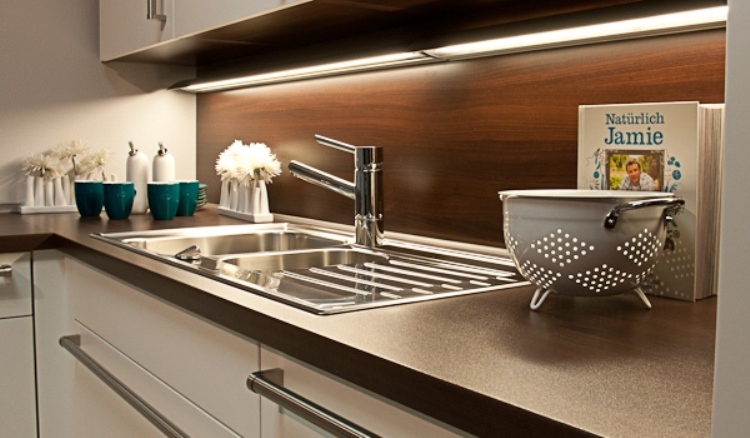
Each owner decides on his own which of the above options he likes best. Several types of lighting can be combined.
Important: the following requirement is imposed on any lighting device - its light flux must be directed correctly (if above the sink, it means to illuminate the sink, etc.).
There are also several lighting modes:
- central lighting installed on the ceiling and involving the installation of chandeliers, built-in spotlights or special paths;
- special. This includes all types of lighting when there is no shadow and there is a directional illumination of the working area of the kitchen or the eating area. Sources of artificial light in this case are hanging types of lamps, LED bulbs, ceiling tape, wall sconces, etc.
Illumination of a specific area of a kitchen side dish or work area can be carried out with a decorative lighting element.
Application of kitchen lighting
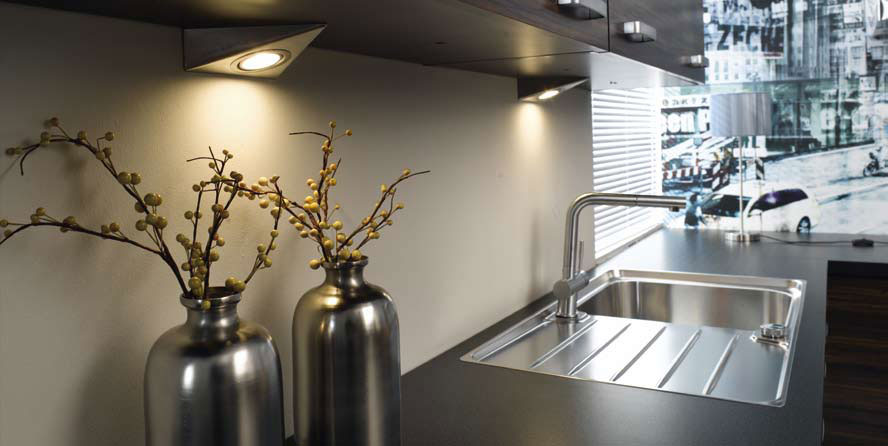
In many apartments, a combination of light sources is used not only in the bedroom or living room, the kitchen is the place where maximum light is required only in certain areas. In the kitchen, all surfaces can be equipped with additional lighting:
- ceiling. This plane is most often equipped with artificial light sources: a chandelier, spotlights or neon tape. To install tape and spotlights, additional installation of a suspended ceiling structure will be required. The main purpose of the ceiling (main) lighting is to create normal visibility inside the room at night;
- kitchen set (hanging cabinets). If the lighting is installed inside the cabinets, then this is done more for decoration. A light-emitting diode (LED) strip is most often used as a lighting element, which lasts a long time and has a low power consumption. In this way, not only the shelves of the cabinets are decorated, but also the doors. As a result, the façade of the headset glows pleasantly in the dark;
- work zone. This section of the kitchen can be called a key, because it is here that the real culinary art is created. The light comes here from spotlights or from an LED strip. The surface for mounting the luminaires is the bottom of the hanging cabinets, and the light beam is directed straight down. The number of required lighting fixtures can be determined as follows - for each running meter of the headset, 1 light bulb is required;
- a sink is the place that needs mandatory lighting;
- hob. It is most often illuminated by a backlight mounted in the hood.
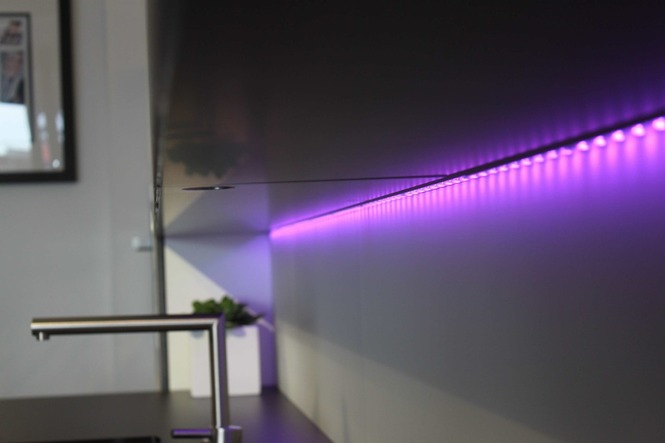
Among the original options for directional lighting, one can note the lighting elements built directly into the kitchen backsplash. For this, a complex design of the apron is created (as an option - from 2 layers of triplex with a tab with an LED strip inside).
Range of lamps
Illumination of the working area for the kitchen can be done with a variety of lamps:
- all kinds of chandeliers of different shapes, sizes and colors;
- wall sconces and lamps;
- floor lamps and lamps on stands;
- point views;
- hanging products;
- LED and neon strips;
- bus lighting devices;
- ceiling mount spots.
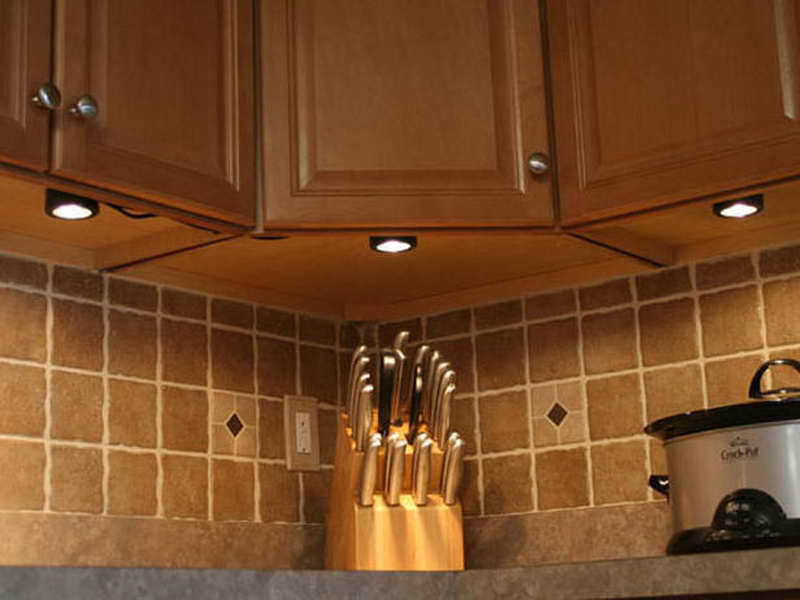
The listed options do not cover the full diversity of the modern market, only the most common positions among consumers are given.
Designers believe that the use of one type of luminaire or another can affect the overall atmosphere of the room. Even the color of the instruments matters. Correctly chosen illumination of the kitchen work surface can symbolize a romantic and relaxed mood, or vice versa - energize all households.
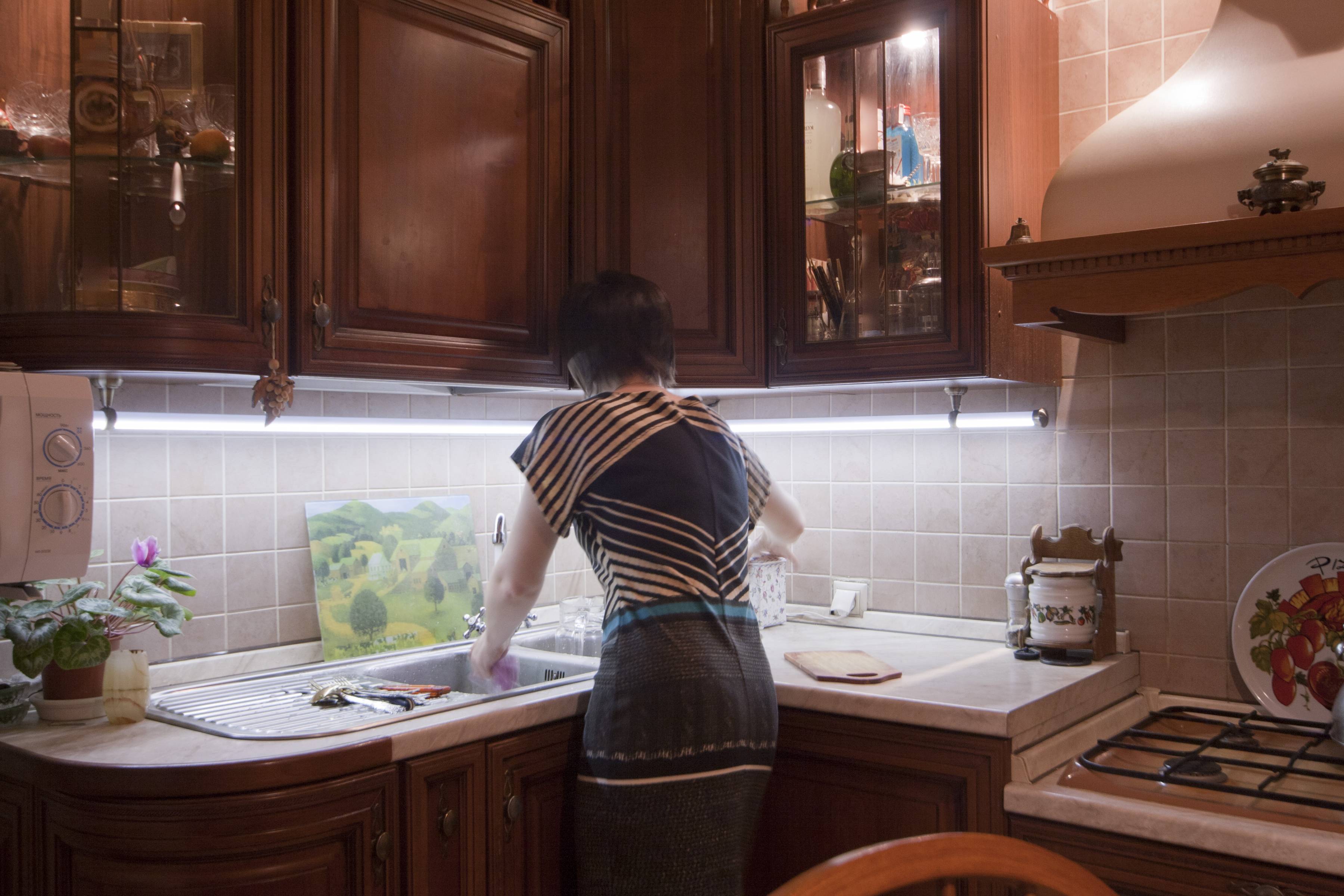
The planning of the points of placement of all lighting fixtures should be based on the available information about the layout of the laid electrical network. It is better to use separate sockets to connect lamps, sconces and other elements of additional light. This will reduce energy consumption in the whole room.
Important: the minimum distance of sockets and switches from the hob and sink is 60 cm. This is required by safety regulations.
The installation of lighting devices must take into account the restrictions on the intensity of the kitchen lighting:
- illumination of the working surface in the kitchen with halogen lamps should not exceed 30 W / sq. m area;
- the power of incandescent lamps should not exceed 26 W / sq. m .;
- threshold for lighting with fluorescent devices - 9 W / sq. m;
- LED lamps can light up to 4W / sq. m.
Important: when choosing the color of the luminaire, it is worth taking into account the specifics of the room - a bright orange ray of light can distort the real color of the product. Therefore, it is better to stop the choice on light products of a warm color.
You can use colored lighting only for decorative purposes, for beauty.
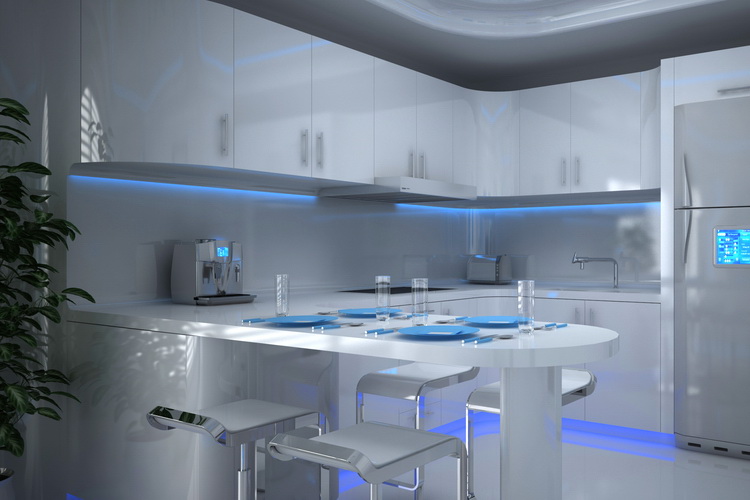
A kitchen set made of natural wood is best suited for light illumination of yellow, orange, beige and other warm colors. Blue and silver lighting fittings harmoniously fit into the high-tech style kitchen.
An important point: all installed elements of additional lighting must be adjustable in light intensity, and pendant lamps must be lowered or raised higher (depending on the needs of the hostess).
If the kitchen uses only ceiling lighting, a shadow zone is created near the cutting table or sink and the quality of the prepared food can be significantly reduced.
Choosing the right LED strip
The original lighting of the working area for the kitchen can have, in addition to practical, also aesthetic value. This style element will refresh the decor, set the desired mood and decorate the facade of any headset.
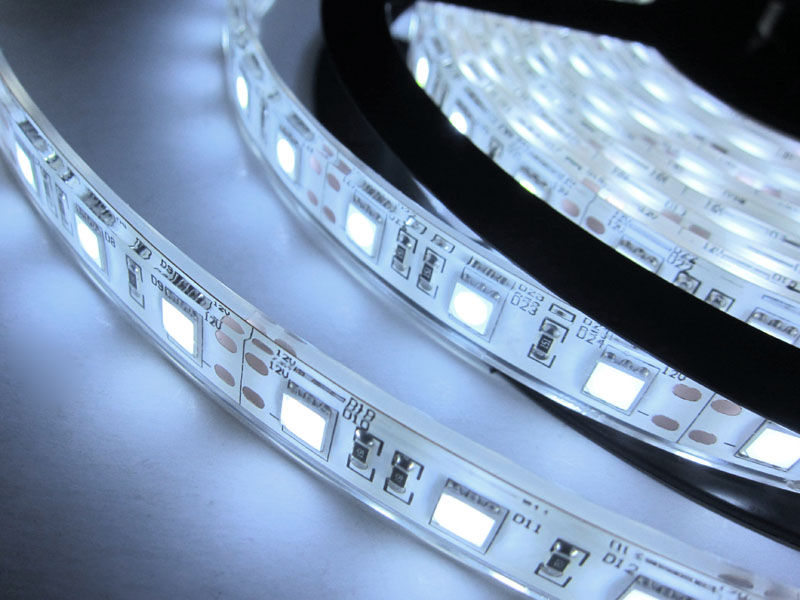
The use of LED strips in kitchen interiors has a short history. These lighting elements have appeared recently, but they are firmly conquering various branches of life: automotive, tuning, furniture production, etc. Compared to traditional light sources, it has several significant advantages:
- low energy consumption;
- environmental friendliness (the device does not contain mercury);
- the service life is several times longer than the service life of conventional lamps;
- simple production scheme;
- compactness;
- uncomplicated use;
- ease of installation;
- high flexibility, etc.
The design of kitchen lighting should be approached creatively, because in this room not only food for households is prepared. Friends are invited here for tea, important conversations and plans are made here. The mood of the visitors directly depends on the comfort and coziness in the kitchen. And it is the lighting fixtures that help create the right atmosphere.
Installation of LED lighting in the kitchen
Installing an LED strip to illuminate a separate area of the kitchen should begin with the questions: where should it be located? How will it look from the outside?
Many craftsmen prefer to order LED strips in China. Products are sold anywhere, but Chinese manufacturers skillfully combine quality, value and richness of assortment in their products. If the master chooses an RGB multicolor tape, it is necessary to check the presence of a controller (if it is not there, you will have to buy it). In addition to the tape itself and the controller (for multi-color products), you will need a remote control to control the device from a distance and a power supply.
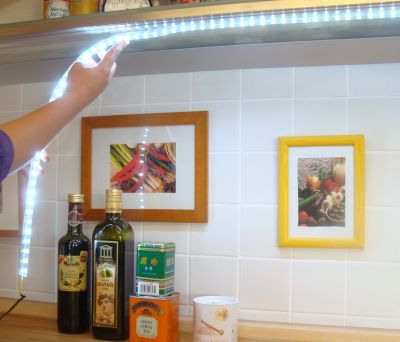
The illumination of the working area of the kitchen is most often performed along the bottom of the hanging cabinets. Therefore, it is very convenient to use tape with an adhesive base. Such lighting elements are produced in coils, which simplifies its installation. Before fixing the tape on the cabinets, their surface must be well degreased. For these purposes, you can use any alcohol composition.
Important: when installing any electrical appliances, you must take precautions so as not to harm your health.
Installing the LED strip to illuminate the countertop is done as follows:
- it is necessary to remove the protective layer from the back of the tape;
- glue it to the surface of the headset wall cabinets;
- in the process of fixing the lighting element, its kinks should be avoided;
- if it is necessary to divide the tape into 2 parts, it is possible to cut only between the areas intended for soldering (the areas are specially marked by the manufacturer);
- connecting the LED strip to the power supply and the controller (voltage polarity must be strictly observed!);
- after the final formation of the chain, you can plug the tape into the outlet and turn it on.
Important: if a remote control is included with the tape, this simplifies the operation of the backlight. The remote control can be used to adjust the light intensity and the color of the stream (if this function is available).
The three-color LED strip, which can glow in green, red and blue colors, looks original and stylish. If you turn on the glow of all 3 shades, you get an unusual multi color.
